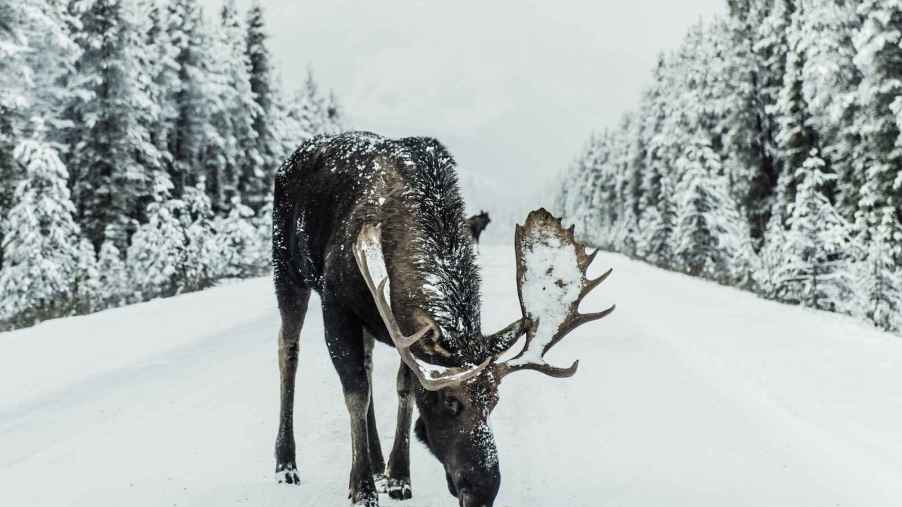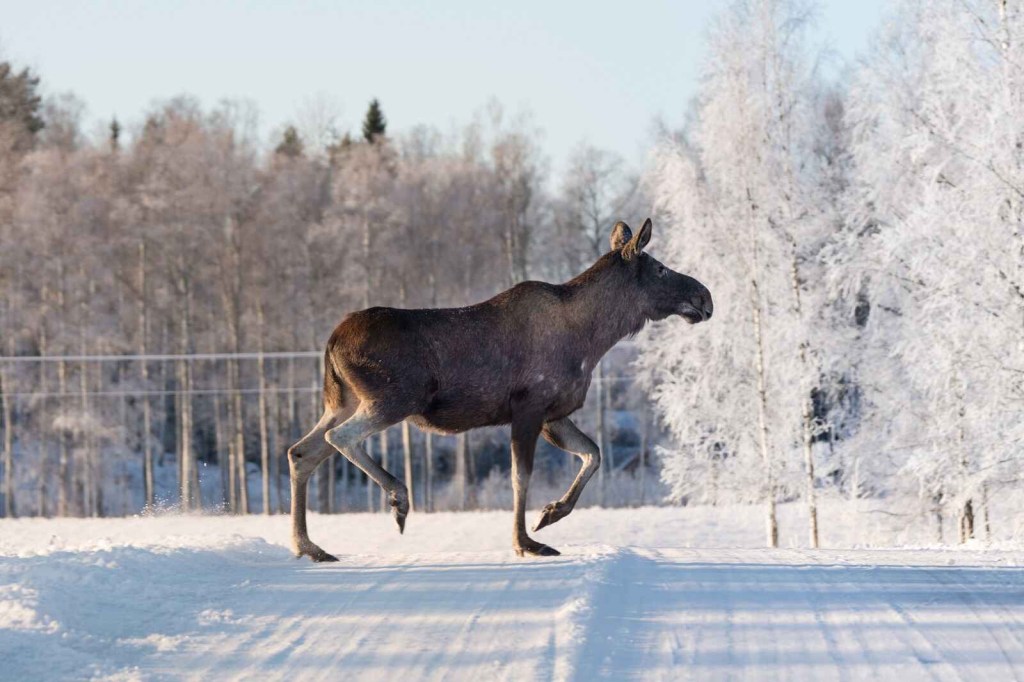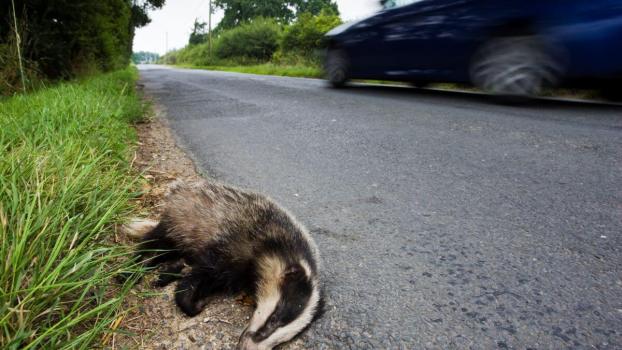
For Canadians, winter weather spells a whole different set of driving hazards than slippery roads. Each year, Parks Canada issues a warning to road-goers to try not to let Moose lick their vehicles. Huh?
Turns out moose like to wander highways each winter season and lap at the salt-dusted roads. At a standstill – parked or otherwise – you might have a moose bellying up to your car and sampling a taste.
“It does sound very funny…it’s okay to laugh at it, as long as people drive responsibly and do what’s best for the wildlife,” said Tracy McKay with Parks Canada. “Unfortunately, this kind of puts [moose] at risk of being injured or killed if they get hit by a vehicle. Parks Canada understands that seeing those wildlife is a real highlight for a lot of people, but we ask people not to stop…so that the moose can’t get used to licking salt off of the cars.”
During the summer, moose have plenty of greenery to supply essential minerals. In the winter, moose have learned that road salt used for deicing helps them get through the dead season. According to McKay, about four moose are killed by cars each year just in Alberta’s Jasper National Park.

The most common road deicer remains sodium chloride, utilized in rock salt form. Since it’s naturally occurring and inexpensive, it’s widely slung across roads to melt away ice. Parks Canada now uses sand on park roads, but moose still seem attracted to it due to trace amounts of salt in the mixture.
For northern dwellers in moose territory, it’s safest to drive past the behemoths slowly and carefully.
Source: CBC News Vancouver





